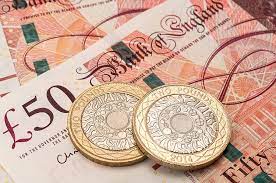Pound Sterling advances amid improved market mood, UK Inflation in focus

London: The Pound Sterling (GBP) extends recovery ahead of the United Kingdom Consumer Price Index (CPI) for November, scheduled for release on December 20. Investors see the UK’s headline and core inflation declining further in November as higher interest rates have dampened household spending on core goods. Prices of goods at factory gates are seen contracting due to poor demand from the slowing domestic and international economy.
The GBP/USD pair recovers amid expectations that softer inflation data would be insufficient to prompt Bank of England (BoE) policymakers to exit from “sufficiently restrictive” monetary policy stance and escalate hopes for more rate cuts in 2024. Inflation in the UK economy is highest among western nations and a call for dovish stance could fire up price index again
Hawkish commentary from BoE Deputy Governor Sarah Breeden has strengthen the Pound Sterling further. Breeden endorsed restrictve monetary policy for a longer period. While asked about guidance on interest rates, Breeden said “I have no pre-determined policy path in mind,”
Pound Sterling rebounds from 1.2650 ahead of the UK’s inflation data for November, which will be published on Wednesday at 07:00 GMT.
The UK inflation data is expected to continue easing further amid higher interest rates by the Bank of England, which has dampened the overall consumer spending and sluggish economic activities.
According to the preliminary consensus, monthly headline inflation is expected to have grown by 0.2% against a stagnant performance in October. The annual headline CPI is seen declining to 4.4% against the former reading of 4.6%.
UK’s core inflation that strips off volatile food and Oil prices is estimated to have dropped to 5.5% versus. 5.7% in October.
In the event if the data shows a continuation of easing inflation it would be a sign of relief for BoE policymakers, which have been favouring a tightening regime for interest rates to achieve price stability.
Meanwhile, monthly Producer Price Index (PPI) for input and final products are seen contracting by 0.6% and 0.1% respectively. This indicates that producers were forced to reduce prices of goods at their factory gates due to a sharp decline in consumers’ demand.
Investors have already started raising bets for four or five rate cuts in 2024 amid easing inflationary pressures. However, BoE Deputy Governor Ben Broadbent said that more evidence is needed to conclude that the price index is in a clear downtrend.
Ben Broadbent, on Monday, highlighted disparities in labour market measures, as the Office for National Statistics (ONS) shifted to an experimental series method to calculate employment data due to lower responses.
Broadbent warned that sticky wage growth could force the BoE to keep interest rates elevated for a longer period.
Last week, the BoE emphasized keeping interest rates in a restrictive territory to ensure the achievement of price stability after keeping interest rates unchanged at 5.25%.
Meanwhile, the US Dollar Index (DXY) falls from 102.50 as discussions about rate cuts by the Federal Reserve (Fed) outweighs.
The broader appeal for the USD Index remains weak as the Fed is numero uno among western central bankers, when it comes to discussing cutting rates in 2024.
Last week, median projections from Fed policymakers showed that interest rates would be reduced by 75 basis points (bps) in 2024, with core Personal Consumption Expenditure price index (PCE) falling to 2.4%.
On Monday, San Francisco Fed Bank President Mary Daly said that it would be appropriate to lower borrowing costs in 2024 amid progress in inflation declining towards 2% this year.





